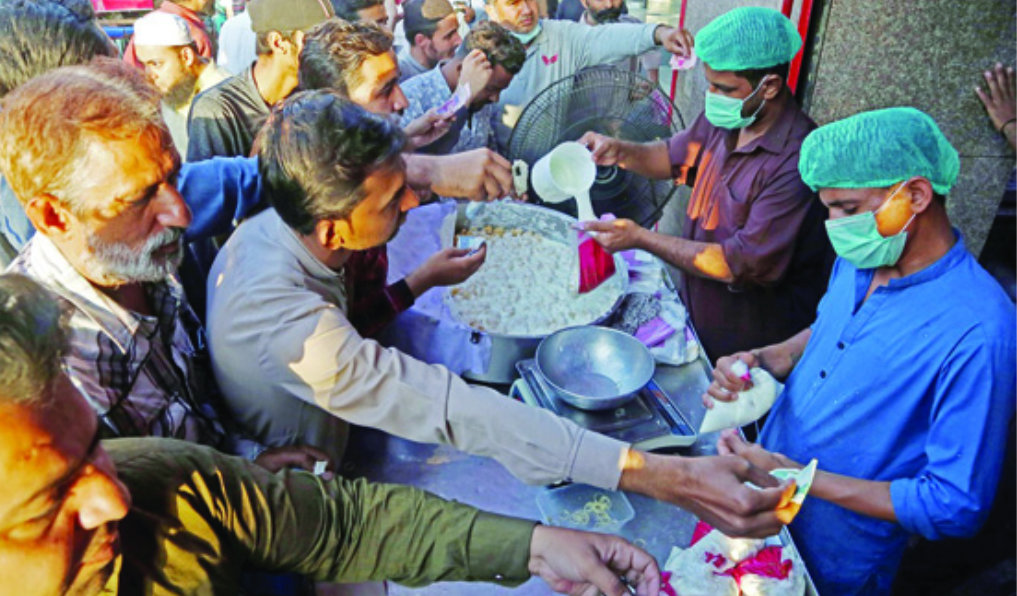KARACHI: For foodies in Pakistan’s capital Karachi, there is no better time than Ramadan — when the aromas and sights of special delicacies fill the streets as the time for the sunset iftar meal nears — and no better place to find the best snacks than the megacity’s iconic food hub, Burns Road.
Stretching through the heart of the old city in the Saddar Town area, the famous food street appeared in urban plans in the late 19th century, but only gained fame after 1947, when British India split into two independent states — India and Pakistan — and tens of thousands of Indian Muslims migrated from Delhi and settled in the area.
They brought with them their cuisine, which became part of the foodscape in a city that often lays claims to culinary excellence.
From lentil fritters in savory yogurt known as dahi baray, to spicy deep-fried kachoris filled with green gram, potato stuffed crispy samosas, sweet spiral-shaped crisp and juicy jalebis, and many more, some of the snacks Burns Road is famous for have been handed down from generation to generation.
Naseem Saleem, who sells dahi baray, told Arab News that his family, migrants from India, had been running a food shop on Burns Road for almost seven decades.
“Like most of these snacks you see here, dahi baray also has its origin in Delhi, from where our family migrated and opened this shop in 1954,” he said, hastily packing food parcels for customers to bring home for iftar, the evening meal enjoyed after sunset in Ramadan.
People gather outside a food stall in Karachi’s Burns Road before the iftar meal. (AN photo by S.A. Babar)
A few yards from Saleem’s shop, a queue was forming in front of Faseko, and adjacent to it Fresco Sweets, both famous for samosas, Arab-style bread and sweets.
Customer Owais Ali, who had come to Burns Road from the Gulshan-e-Iqbal locality some 20 kilometers away, told Arab News the food street offered the best quality of Ramadan fare.
“Dahi baray, samosas, kachori and rolls become a mandatory part of our table spread during Ramadan,” he said, adding that while the same varieties of food could be found closer to where he lived, the taste was different.
He would come to Burns Road, he said, despite the distance and long queues outside his favorite vendors.
“I come here thrice a week at least during Ramadan and more when we have guests at home for iftar,” he added as he hung food parcels on the handlebars of his motorbike and revved the engine.
“My task at Burns Road is accomplished.”




